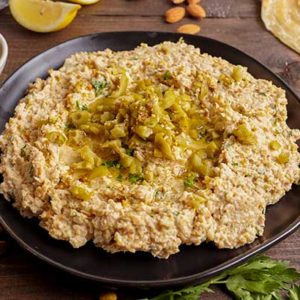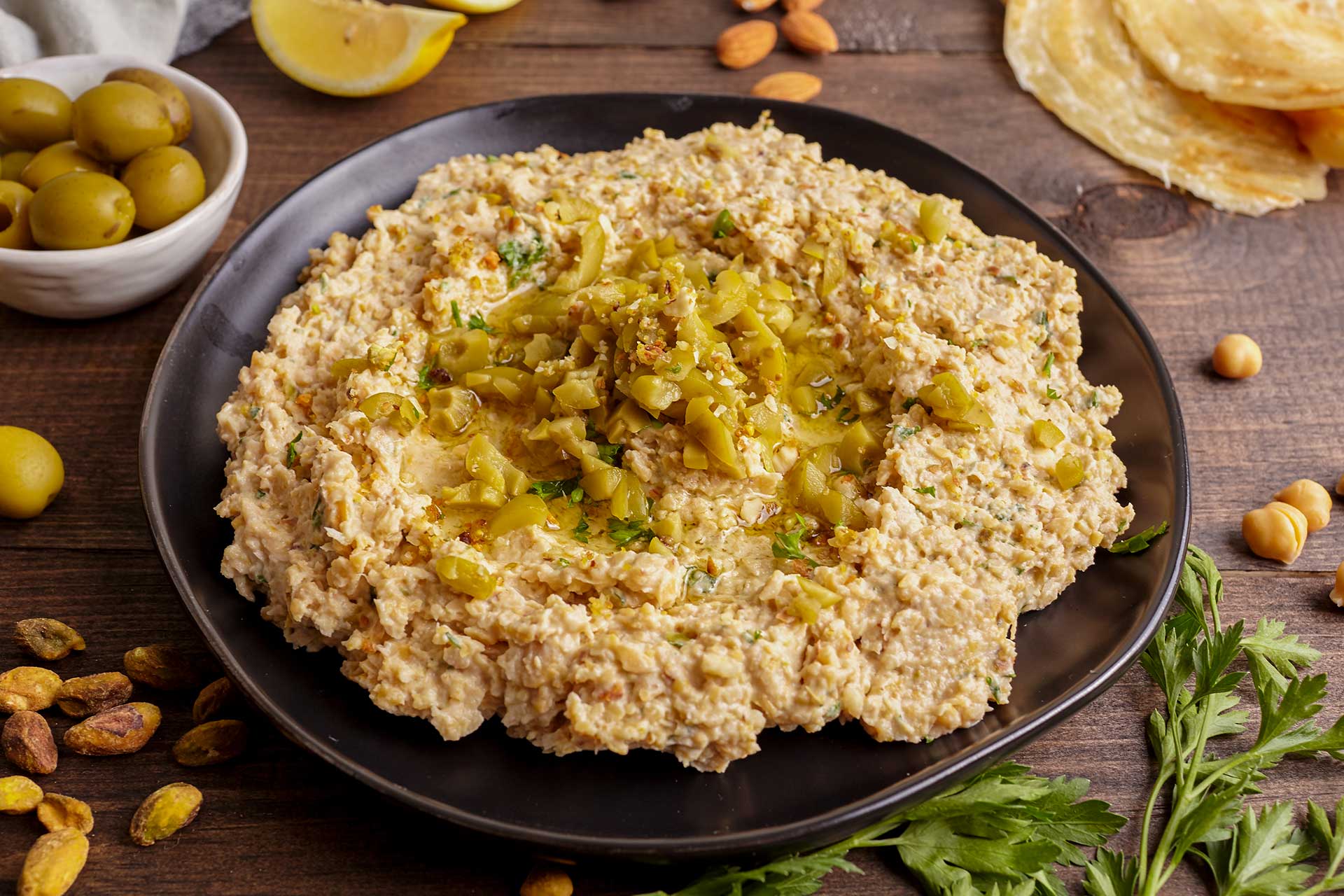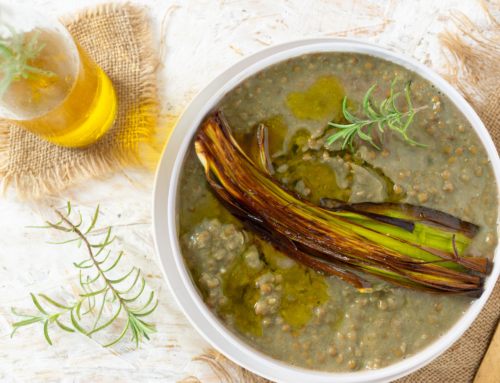Hummus is one of the most commonly served dishes at Middle Eastern restaurants. Hummus means “chickpeas” in Arabic and is actually an abbreviation of the Arabic name of the dish hummus bil-tahina, which means hummus with tahini. This simple but typically bland dip has five essential ingredients: chickpeas, tahina (sesame paste), olive oil, lemon juice and garlic. While hummus bil-tahina is served in Egypt today, it is more frequently found at traditional restaurants than at home. The recipe you find here is an original, authentic hummus recipe.
We don’t know the exact origins of hummus in Egypt, but it is unlikely ancient. While a jar of chickpeas and heads of garlic were found in the tomb of the boy king Tutankhamun, the other basic ingredients in hummus were introduced to Egypt in the Greco-Roman period or later.
Egyptians of the 13th and 14th century AD enjoyed feasting on a version of this dish called hummus kasa, which means crushed hummus. While they omitted garlic, all of the other standard ingredients were usually included. But chefs didn’t stop with the basics in medieval times. Instead, they gave it a lovely green-flecked appearance by adding fresh parsley and mint. Mixed nuts gave it a chunky texture and spices give it a flavor complexity that standard hummus lacks.
Ten recipes for hummus kasa appear at the beginning of a chapter on cold dishes in a 14th century Egyptian cookbook. These recipes are comparable to modern meze and make a rich appetizer served with pita bread. The introduction to one of the recipes even indicates it is also good for increasing a man’s libido.
The authentic hummus recipe below is based on the ingredients and techniques found in several medieval hummus kasa recipes, none of which give measurements of the ingredients, so you can play with quantities as you like. While hummus kasa can be served immediately, one recipe recommends leaving it for 24 hours before serving, which would allow the flavors to meld.

14th Century Egyptian Hummus
Ingredients
- 1.5 cups chickpeas (15 oz can), drained and rinsed
- 1/4 cup extra virgin olive oil
- 1/2 cup tahini
- 1/2 cup wine red wine vinegar
- 2 tbsp fresh parsley
- 2 tbsp fresh mint
- 1/4 cup shelled pistachios, raw
- 1/4 cup shelled walnuts, raw
- 1/4 cup almonds, raw
- 1/4 cup hazelnuts, raw
- 1/8 tsp thyme
- 1/8 tsp caraway seeds
- 1/4 tsp coriander seeds
- Salt, to taste
- 1/2 cup black or green olives, pitted or with pits
- 1 preserved lemon, chopped into pieces (optional) or a squeeze of lemon juice
Instructions
- Mash the chickpeas with a fork or potato masher.
- Stir together the olive oil, red wine vinegar and tahini and then mix in with the chickpeas.
- Toast all of the nuts in a skillet on medium heat. Stir often, careful not to burn. Should take about 5 minutes. Remove from heat.
- Finely chop parsley and mint in a food processor and then add the nuts and coarsely chop the nuts. Add herbs and nuts to chickpea mixture.
- Mix the remaining spices into the chickpeas. Top the hummus with olives and either chopped, preserved lemons or a good squeeze of lemon juice.







This is my new favorite hummus! I subbed dried Egyptian spearmint for fresh mint. The flavor combo is to die for! The toasted nuts give subtle taste and wonderful crunch to the hummus! Thank You for a fantastic recipe!
Made it to go with Egyptian Falafel(with Fava beans), flatbread and Dukka. Loved this recipie, it’s a bit of work but froze extra in freeflow balls and we pull a few out as we need it, doesn’t dry out. Not buying store Hummus again
Yum!
Sounds delicious! I am going to make this to add to our Mediterranean Thanksgiving Appetizers!